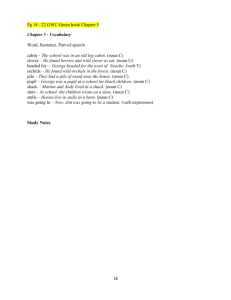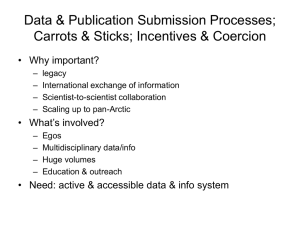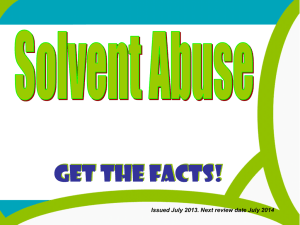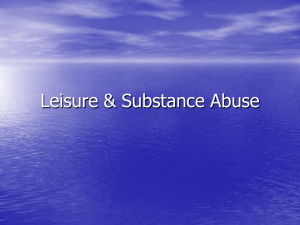16 strategies for a successful juvenile drug court
advertisement
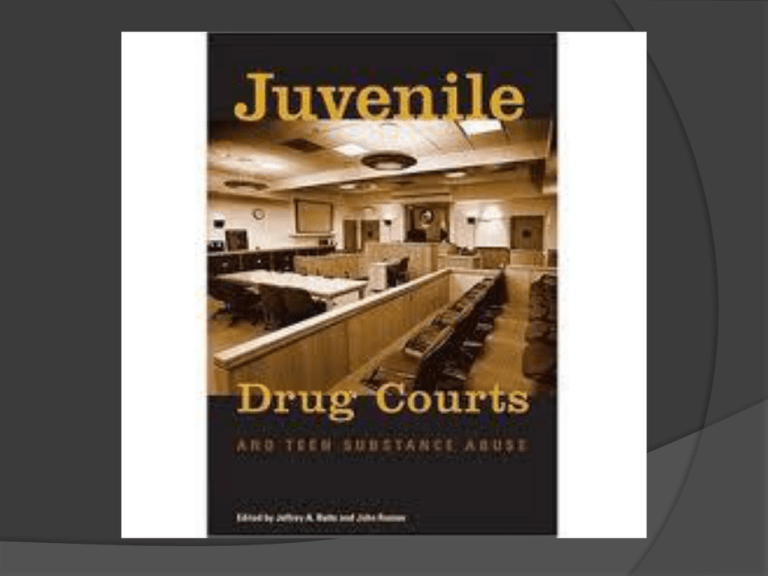
In developing a treatment program the central question is: Do drug-using students need to stay in school? NEOSHO R-5 DRUG POLICY MEETING AUGUST 25, 2011 AGENDA I. Introduction II. Status Quo III. Goal Create system to properly respond and address student drug related offenses. IV. Type of Drug-Related Offenses A. Intoxication B. Possession/Distribution C. Gray Area V. Drug Assessment A. Who, When and Why B. Cost VI. Brain Storming A. Accountability (Consequences for Actions) B. Sanctions C. Treatment Options VII. Wrap Up/ Where do we go from here? Neosho Police Department Mike Sharp Pete Russell Dustin Whitehill Neosho School Board Caroline Perigo Mike Stoufer Lynn Otey Brett Day Phil Wise Steve Douglas Neosho School Administrators Newton County Drug Court Team DESCRIPTION OF THE NEOSHO R-5 DRUG COURT PROGRAM Judge Drug Court Administrator Juvenile Officer School Resource Officer Guardian Ad-Litem /Attorney Children's Division Treatment Juvenile Drug Court Intensive treatment program to provide specialized services to: a.) Students; b.) Families Judicial Involvement and Supervision Intensive Treatment Program Provides intensive and continuous judicial supervision over substance abuse juveniles by: Coordinated and supervised delivery of an array of support services necessary to address the problem such as: a.) Substance Abuse Treatment b.) Psychological Therapy c.) Family Counseling d.) Education e.) Mentoring DEVELOPMENTALLY APPROPRIATE SERVICES Alcohol and Other Drug Abuse, Dependence and Problem Use Peaks at Age 20 100 90 80 70 Percentage 60 Over 90% of use and problems start between the ages of 12-20 People with drug dependence die an average of 22.5 years sooner than those without a diagnosis It takes decades before most recover or die Severity Category Other drug or heavy alcohol use in the past year 50 40 30 Alcohol or Drug Use (AOD) Abuse or Dependence in the past year 20 10 0 65+ 50-64 35-49 30-34 21-29 18-20 16-17 14-15 12-13 Age 11 Source: 2002 NSDUH and Dennis & Scott, 2007, Neumark et al., 2000 Adolescents who use weekly or more often are more likely during the past year to have .. 0% been arrested dropped out of school been admitted to an emergency room gotten into physical fights have conduct disorder engaged in illegal activity Source: Dennis, White & Ives, 2009 20% 40% 1% 23% 60% 80% 100% No or Infrequent Use 6% Weekly or 25% More Use 17% 33% 11% 47% 13% 57% 17% 69% 12 Adolescent Brain Development Occurs from the Inside to Out and Front Photo courtesy offrom the NIDABack Web site.to From A Slide Teaching Packet: The Brain and the Actions of Cocaine, Opiates, and Marijuana. pain 13 Prolonged Substance Use Injures The Brain: Healing Takes Time Normal levels of brain activity in PET scans show up in yellow to red Reduced brain activity after regular use can be seen even after 10 days of abstinence Normal 10 days of abstinence After 100 days of abstinence, we can see brain activity “starting” to recover 100 days of abstinence Source: Volkow ND, Hitzemann R, Wang C-I, Fowler IS, Wolf AP, Dewey SL. Long-term frontal brain metabolic changes in cocaine abusers. Synapse 11:184-190, 1992; Volkow ND, Fowler JS, Wang G-J, Hitzemann R, Logan J, Schlyer D, Dewey 5, Wolf AP. Decreased dopamine D2 receptor availability is associated with reduced frontal metabolism in cocaine abusers. Synapse 14:169-177, 1993. 14 Schedule frequent judicial reviews and be sensitive to the effect that court proceedings can have on youth and their families. Typical Issues • Attendance • Grades • Behavior • Relapse Attendance You miss a day of school the student has to see the School Resource Officer the next day. Zero Tolerance for those who have missed three days of school. By zero tolerance each student shall go to school everyday, if the student believes they are ill they are to check in with the school nurse. •Grades and absences are reported at every court appearance. •Neosho R-5 Juvenile Drug Court Program, works with the school on a daily basis. TEACHERS/TUTORS TEACHERS/TUTORS MENTORING Our Mentors are juveniles who have successfully completed the Neosho R-5 Drug Court Program BEHAVIOR A key component for the integrity of the program is holding each student accountable for their actions. Sanctions COMMUNITY SERVICE TEACHERS/COMMUNITY SERVICE SUPREVISORS Community Project Tornado Relief 1. Essays a. How am I like and not like Eddie Haskel b. Dangers of synthetic marijuana BOOK REPORTS HOUSE ARREST FOCUS ON STRENGTHS Chip on Shoulder REWARDS Relapse •Increase Freedom • Praise • Gift Cards RELAPSE


